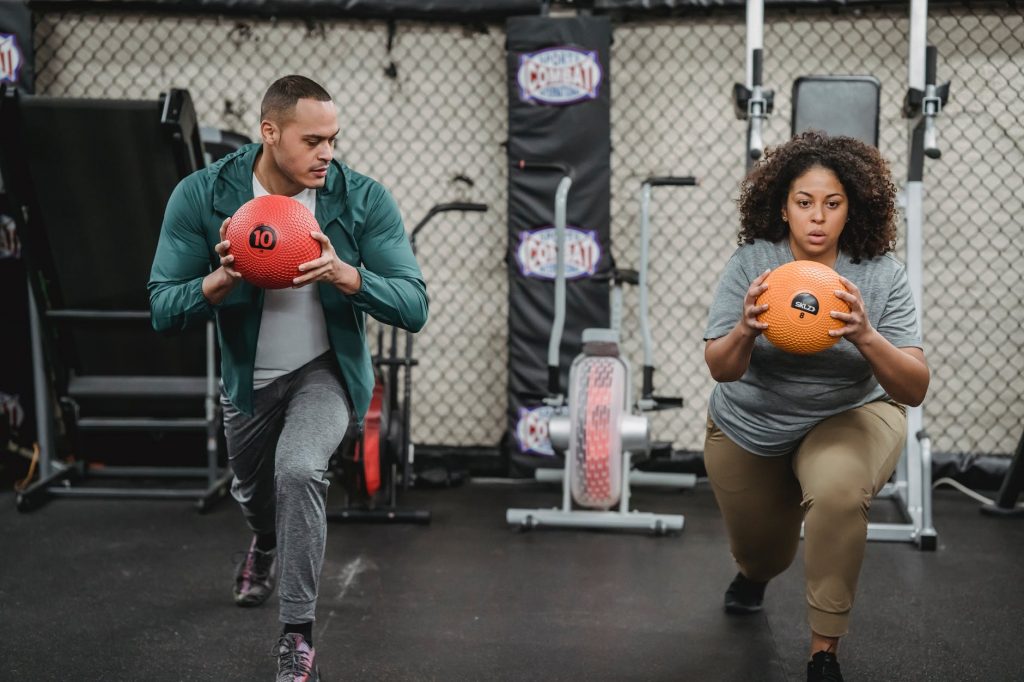Perfecting your lunges is the fastest way to build strong glutes and legs. Lunges create beautiful definition and tone in your lower legs and glutes, as well as functional power for other exercises and sports. Here is all you need to perfect your lunges for deeper and better lunges.
The Benefits
The benefits of adding lunges to your workouts are vast. To fully benefit, you will need to perfect your form when performing lunges. These are some of the best reasons to lunge your legs into shape.
- Weight loss – The humble lunge is a powerhouse; it works with all the large muscle groups in your lower body, creating lean muscle. Lunges help to speed your metabolism up, which in turn burns more calories.
- Balance and stability – Lunges are the perfect exercise for building strength across each quadrant of your body. They rehabilitate your hips, and spine creating core strength and stability in the muscles surrounding the spine and pelvis.
- Re-alignment – If your legs are not aligned, lunges can help realign any imbalances in your body. Lunges help to straighten your back and create a strong and stable core. Your posture and back health will improve as well.
- Functional Fitness – Lunges are a functional exercise, meaning you need them to perform your best in everyday life. The strength they produce can help you lift things, walk distances, and in general, perform better. They help reduce the damage of age-related muscle loss.
The Perfect Lunge
Lunges target several muscle groups such as the abdominals, glutes, quads, hamstrings, calves, and back muscles.
Here’s how to perform the perfect forward lunge:
- Standing tall with your feet hip-width apart.
- Step forward with your left leg; your right knee should be parallel to the ground. You should bend your front leg at a 90-degree angle.
- Your front knee should not stretch beyond your toes; keep your back straight.
- Engage your core and push up to the starting position.
- Repeat with your right leg.
- For walking lunges, perform the exercise and place one foot in front of the other and walk as you lunge. Your core should remain engaged.
- Repeat the lunge on each leg for 12 – 15 reps.
Common Mistakes
Understanding the most common mistakes that are made when lunging is the easiest way to perfecting your form.
- Best foot forward – by not stepping forward enough, your lunges will be shallow, and you won’t benefit from them entirely.
- Keep it straight – Keeping your chin tucked in as if you are holding a ball in place will help keep your spine aligned. Your spine needs to stay straight to reduce the risk of injury.
- Staying on a narrow line– Your feet should be hip-width apart before you step forward. Stepping forward on a narrow centerline will throw you off balance, and you will not be able to activate the muscles properly. Use resistance bands around your thighs and stand with your legs hip-width apart to keep the band taught. This will remind you to keep your stance and give you a more challenging workout.
- Take your time – Lunging through your lunges is the most common way many people don’t fully engage their muscles. Perfect your form and take it slow, you will feel the burn, and it is worth it!
- Don’t pass your toes – Knee pain and injury from lunges are commonly attributed to placing your front foot too close to the back foot and allowing the front knee to bend past the toes of your front foot. Try making your stance wider.
Variations and Modifications
A few lunge variations and modifications can help you get the most out of your lunges.
The Reverse lunge
This lunge is similar to the traditional lunge; however, instead of stepping your foot forward, you step it back and deepen into your lunge. Reverse lunges target the glutes more than the quads. They are essential to incorporate for you to get an even and balanced workout.
Reverse lunges offer a little more stability and make it easier to use free weights such as kettlebells or dumbbells or increase the number of sets.
Goblet Curtsey Lunge
This one is not for the faint-hearted. You will need a kettlebell and some resistance bands if you are up for a challenge.
- Stand with your hips hip-width apart, place a booty band around your thighs.
- Grab a kettlebell in your hands and hold it in front of your chest.
- Step your right foot back towards the left, lower your back knee into the lunge.
- Your upper body should remain straight.
- Drive your front heel into the ground. Slowly engage your core muscles and push up to the starting position.
- Repeat with the left leg.
Tip: Perfect your form with your bodyweight before adding in free weights.
Split Squat
Also known as the Bulgarian Split squat, these are single-leg lunges that are excellent for building strong and powerful glutes. You need a chair or a bench to perform these.
- Balance your foot on a bench behind you.
- Place your hands on your hips for support.
- Slowly lower your rear knee towards the ground.
- Engage your abdominal muscles and rise to the starting position.
- Repeat for 10 – 15 reps on each leg.
Take a Lunge
Whether it is surrenders or split squats, lunges form the most fundamental part of leg exercises. Once you have perfected your lunging form, you will see an improvement in all areas of your workouts.
